Impatiens Problems: Common Impatiens Diseases And Pests
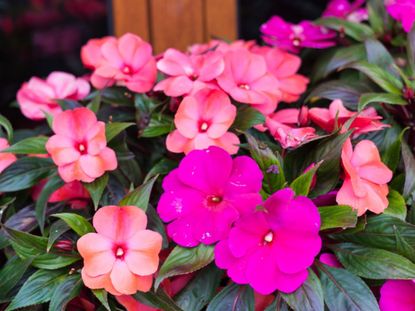

While impatiens plants are normally trouble-free, problems do occasionally develop. Therefore, taking preventative measures beforehand by providing appropriate conditions and being aware of the most common problems with impatiens flowers is crucial.
Environmental and Cultural Impatiens Problems
One of the most common problems with impatiens flowers is wilting. This is usually due to moisture stress. These plants need to be kept consistently moist, but not soggy. Water stress can also cause leaf and flower/bud drop. In addition to watering, wilting can be a result of heat stress, especially if the plants are in too much sun. If feasible, they should be moved or grown in a shadier location. Other impatiens problems are due to fertilization. Although they require little in the way of fertilizer each spring, not enough may lead to mottled looking foliage. On the other hand, too much nitrogen can cause excessive growth and little to no blooms. If non-blooming is an issue, this is usually the problem. Adding phosphorus to the soil should help correct the issue and encourage blooming.
Pest on Impatiens
There are many pests that can affect impatiens flowers. Spider mites, mealybugs, aphids, and thrips are common and usually result in curled, distorted, or discolored leaves. Thrips will generally attack the flowers/buds of plants and may carry a virus that affects these annuals. Another pest on impatiens is the tarnished plant bug, which can lead to dwarfed and deformed flowers. When plants become wilted, begin dying, and appear to be cut at the stems, it's likely due to cutworms. Neem oil is a safe and effective treatment for the majority of pest problems. Nematodes also attack these plants, which will look sickly, stunted, and wilted. Foliage may also turn yellow or bronze colored and slowly die. Plants need to be removed as well as the surrounding soil where these pests dwell. Solarizing plant beds and applying diluted fish emulsion when replanting will help keep them away.
Impatiens Flowers Disease
There are several impatiens diseases, including fungal blights and rots, viruses, and bacterial wilt. Most fungal issues are a result of wet foliage or overcrowding. Leaf spots and rotting can signal fungal problems. Avoiding wet foliage and ensuring adequate spacing can help. Neem oil can also help treat fungal issues. Impatiens Necrotic Spot Virus (INSV) can be a serious impatiens flower disease that is brought about by thrips. Also common is bacterial wilt, which is recognized by sudden wilting and collapse of plants, as well as oozing of stems when cut. Plants will eventually rot to the soil line and must be removed and discarded.
Gardening tips, videos, info and more delivered right to your inbox!
Sign up for the Gardening Know How newsletter today and receive a free download of our most popular eBook "How to Grow Delicious Tomatoes."

Nikki Tilley has been gardening for nearly three decades. The former Senior Editor and Archivist of Gardening Know How, Nikki has also authored six gardening books.
-
 Clever Vertical Vegetable Garden Ideas For Small Spaces – 7 Ways To Save Space
Clever Vertical Vegetable Garden Ideas For Small Spaces – 7 Ways To Save SpaceShort on garden space? Learn some vegetable garden ideas for small spaces that are fun and easy.
By Mary Ellen Ellis
-
 26 Different Types Of Orchids – With Pictures & Information
26 Different Types Of Orchids – With Pictures & InformationDiscover stunning orchid types to grow in your home and garden – from easy beginner varieties to rare and exotic species that are the preserve of experts.
By Melanie Griffiths
-
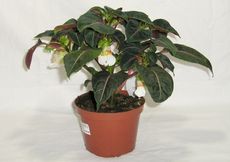 Velvetea Impatiens Care: Tips For Growing Velvet Love Impatiens
Velvetea Impatiens Care: Tips For Growing Velvet Love ImpatiensImpatiens are a staple annual flower for many gardeners. These flowers do well in partial shade and come in a variety of colors. If you enjoy regular impatiens, give the Velvet Love impatiens variety a try. To learn more, click the following article.
By Mary Ellen Ellis
-
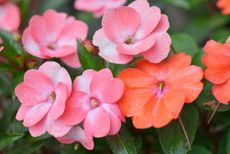 Cutting Back Impatiens: Learn About Pruning Impatiens Plants
Cutting Back Impatiens: Learn About Pruning Impatiens PlantsImpatiens are perfect for filling in those shady areas of beds and the yard where other plants just don’t thrive. They add color and cheer, but impatiens can also become leggy, showing off more stems that blooms. Learn how to cut back impatiens plants in this article.
By Mary Ellen Ellis
-
 Impatiens Water Needs – Learn How To Water Impatiens Plants
Impatiens Water Needs – Learn How To Water Impatiens PlantsBecause of their preference to grow in partial, afternoon, and/or filtered shade, many impatiens’ water needs are different from sun-loving plants. Learn how to water impatiens correctly in this article. Click here for more information.
By Becca Badgett
-
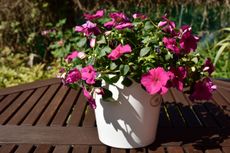 Houseplant Impatiens: How To Keep Indoor Impatiens Plants
Houseplant Impatiens: How To Keep Indoor Impatiens PlantsReadily available in garden centers and at plant nurseries, impatiens are easy to find flowering plants thrive in shady locations. Due to this, impatiens are also excellent candidates for container culture indoors throughout the winter. Click here to learn more.
By Tonya Barnett
-
 What Is Impatiens Arguta – Tips For Growing Upright Impatiens Plants
What Is Impatiens Arguta – Tips For Growing Upright Impatiens PlantsWhen you hear someone mention impatiens, you probably picture the shade-loving bedding plants or New Guinea types. Toss those pictures out the window because the new, rare varieties of Impatiens arguta are like no impatiens you've ever seen before. Learn more here.
By Darcy Larum
-
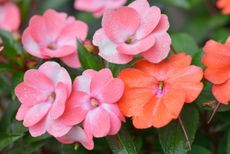 Impatiens Won't Bloom: Reasons For No Flowers On Impatiens Plant
Impatiens Won't Bloom: Reasons For No Flowers On Impatiens PlantImpatiens plants are great bedding and container flowers that ought to bloom reliably all summer long. That?s why it can be especially frustrating if your plants stop blooming or never even start. Learn more about why impatiens won?t bloom in this article.
By Liz Baessler
-
 Seed Propagating New Guinea Impatiens – Can You Grow New Guinea Impatiens From Seeds
Seed Propagating New Guinea Impatiens – Can You Grow New Guinea Impatiens From SeedsOne annual favorite that can be quite pricey because of its bright flowers and variegated foliage is New Guinea impatiens. No doubt many of us have considered growing these higher-priced plants by seed. Can you grow New Guinea impatiens from seed? Find out here.
By Darcy Larum
-
 What Are Sunpatiens: How To Plant Sunpatiens In Garden Beds
What Are Sunpatiens: How To Plant Sunpatiens In Garden BedsSunpatiens is a relatively new impatiens hybrid that thrives in full sun and hot, humid weather, greatly expanding the area in which gardeners can spread impatiens color. Click here for information on how to plant sunpatiens and sunpatiens plant care.
By Liz Baessler